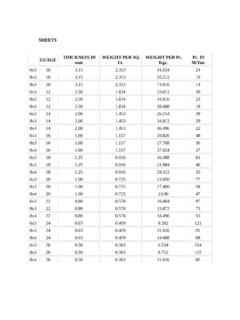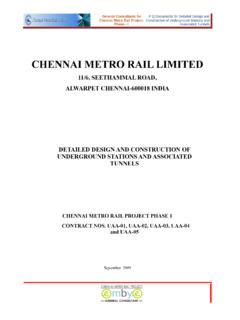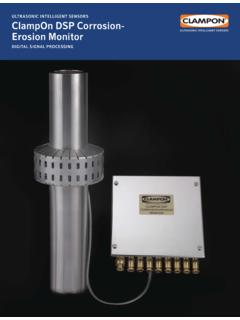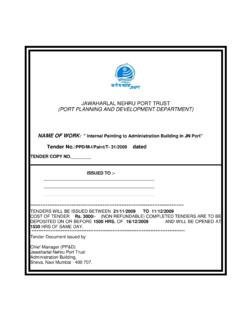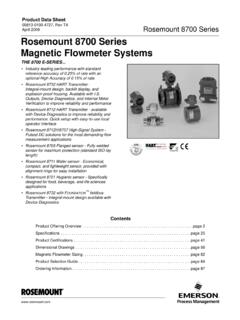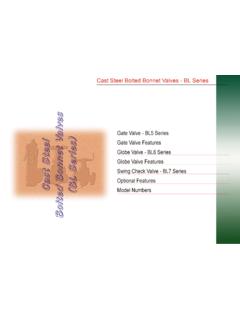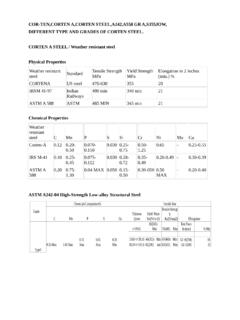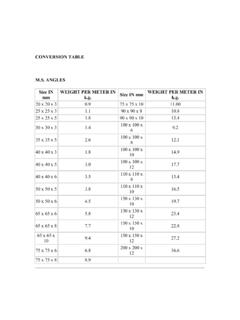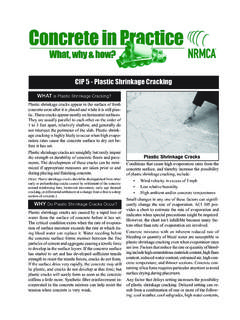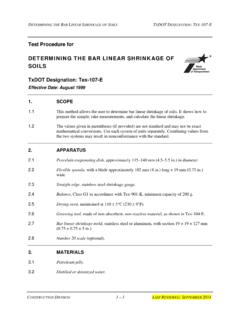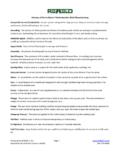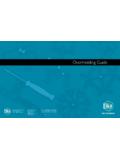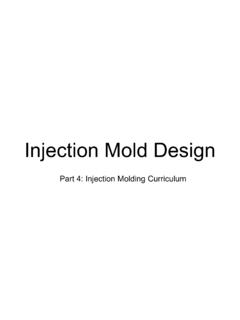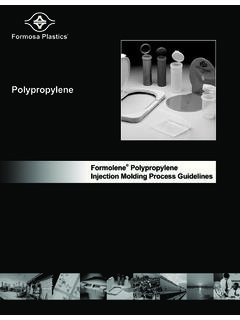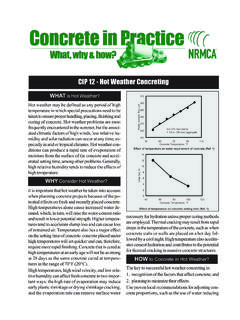Transcription of Plastic Design Guideline - 2.imimg.com
1 Basic Plastic Component Design Considerations David Veerman Mb:: 0402 349 503 Box 1022, Claremont, 6910 Draft Rev Plastic Component Design Considerations Design Guidelines for Metal to Plastic Conversions There are several common mistakes made when replacing a metal product with a Plastic molded part. The new part Design must adhere to specific material and molding process guidelines. Several of the general guidelines are shown below: See guidelines for uniform wall thickness when coring out sections See Draft section for Design specifications Plastic Component Design Considerations To insure a quality final product, it is necessary to start out with quality components.
2 Injection molded parts can be molded to a high quality standard by focusing on these areas of Plastic technology: 1) Correct Part Design 2) Accurate Selection of Material 3) Proper Plastic Processing Only by drawing on expertise from these three areas of Plastic technology can a product designer create quality molded parts that maximize performance and are cost effective. This Design guide deals only with the part Design . Correct Part Design Guidelines If there was only one rule for the injection molding process it would have to be "maintain uniform wall thickness". Here are some examples of problems associated with part designs that feature non-uniform wall thicknesses: Sink marks due to uneven shrinkage Sink marks result from a wall yielding to the still shrinking interior mass.
3 Stress due to uneven shrinkage A part with non-uniform wall thickness will cool unevenly, resulting in high molded-in stress. Voids due to uneven shrinkage The already cooled section will not yield to the shrinking action of the cooling interior mass causing voids in the thick portion of the part. Warpage due to uneven shrinkage Concentrated stress at the junction of high & low shrinkage areas may cause a part to warp. Design Considerations - Draft Plastic parts are always designed with a taper or draft in the direction of mold movement to allow part ejection or removal from the mold. Since plastics shrink when cooled, it is common for parts to shrink (or grip tightly) to cores. A good definition for draft would be: the degree of taper of a side wall or rib needed to allow the molded Plastic part to be removed from the metal mold.
4 Without proper draft, Plastic parts may be difficult to remove from the mold. A draft angle of 1/2 degrees is regarded as minimum for most applications. Draft angles of 1 1/2 to 2 degrees per side are considered normal for Plastic injection molding. Plastic Component Design Considerations Design Considerations - Ribs Many times the stiffness of a part must increase because of the load applied to the part Design . One of the easiest ways to cure this problem is change the part geometry by adding ribs. The use of ribs is a practical way and economical means of increasing the structural strength of a part. But there are guidelines that govern adding ribs without causing sink marks or surface blemishes to your parts.
5 1) Rib thickness should be less than wall thickness. A rib thickness of 60% to 80% of nominal wall thickness is recommended. 2) To increase stiffness increase the number of ribs or "gusset plates", another feature designed to strengthen the Plastic part. Height: max. height of three times nominal wall thickness of part Spacing: minimum of two times nominal wall thickness of part between ribs 3) For a given stiffness, it is better to increase the number of ribs, not the height. 4) For thick ribs "core out" the rib from the back. This creates a hollow space underneath the part and maintains a uniform wall thickness. Plastic Component Design Considerations Design Considerations - Holes Holes are easy to produce in molded parts.
6 Core pins that protrude into the mold cavity make the holes when the part is molded. Through holes in the molded parts are easier to produce than blind holes, which do not go all the way through a part. Blind holes are made by core pins supported on one end only. The pins can be deflected and pushed off center by the pressures of the molten Plastic material during the molding process. A good rule of thumb: the depth of the blind hole should be about twice the diameter of core pins up to 3/16", and up to four times the diameter of core pins over 3/16". The guidelines for blind and through holes are seen below. Blind Hole (shown with draft) L= 2D for Diameters Less than 3/16" dia. core pins L= 4D for Diameters More than 3/16" dia.
7 Core pins Through Hole (shown with draft) L= 4D for D <3/16" dia. core pins L= 6D for D >3/16" dia. core pins There are definite rules for the placement of cored holes in a molded part. If these minimum distances shown below are not followed, the holes will be egg shaped or the part will deform in the areas around the holes. T= wall thickness of part D= diameter of hole As depicted above, the distance from the edge of a hole to a vertical surface ( rib) or the edge of a part should be twice the part thickness (or more), or at least one diameter of the hole. This same rule applies between holes - at least two part thicknesses or one hole diameter should be specified. As easy as it is to make holes in molded parts it does not come without some concerns for the strength of the part.
8 For every cored or molded hole there will be a weld line. The weld lines are caused by the flow of the melted Plastic around the core pins. These weld lines are not as strong as the surrounding Plastic material, and also may detract from the overall appearance of the molded part. The part designer should consider these points when designing holes in a molded part. Plastic Component Design Considerations The coring of holes is easy when the axis is parallel to the parting line. But when holes and other features run perpendicular to the parting line then retractable cores (or cams) are required. Split pins and cores (called passing steel shutoffs) can be used to create some of the features. The designer needs to be aware of the problems of side action cores and the added expenses associated with these types of molds.
9 With a little understanding of how the mold opens and where the parting line will exist, these costly features can be modified. Rule of thumb: whenever possible all Design features should be incorporated in the same direction of the mold opening so that cam action can be avoided. Plastic Component Design Considerations Design Considerations - Bosses Bosses are used for locating, mounting, and assembly purposes. There are boss Design guidelines that must be followed to insure the highest quality in molded parts. Again, one of the main points to consider is nominal wall thickness. Too many times bosses are designed with thick wall sections that can affect the appearance of the Plastic part and the final product.
10 Rule of thumb: the wall thickness around a boss Design feature (t) should be 60% of the nominal part thickness (T) if that thickness is less than 1/8". If the nominal part thickness is greater than 1/8" the boss wall thickness should be 40% of the nominal wall. Boss diameter, wall thickness, and height Design parameters. While boss heights vary by Design , the following guidelines will help avoid surface imperfections like sink marks and voids: the height of the boss should be no more than 2 1/2 times the diameter of the hole in the boss. Please observe the "60/40" rule (see above) for the wall thickness at the bottom of the boss. Plastic Component Design Considerations Design Considerations - Radii In the Design of injection molded parts, sharp corners should be avoided.
